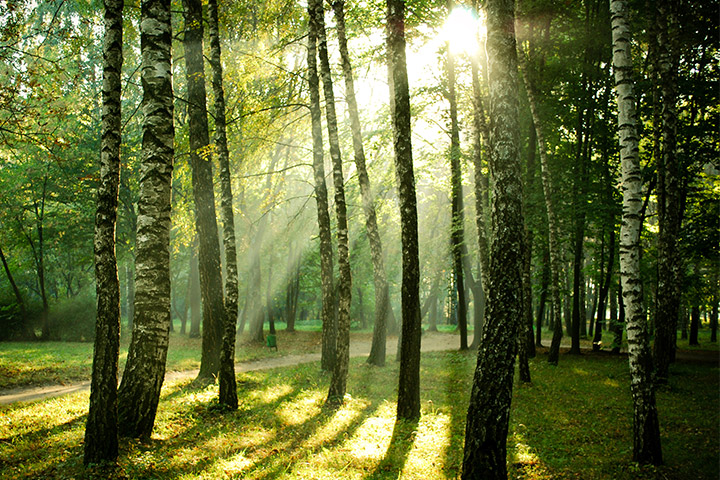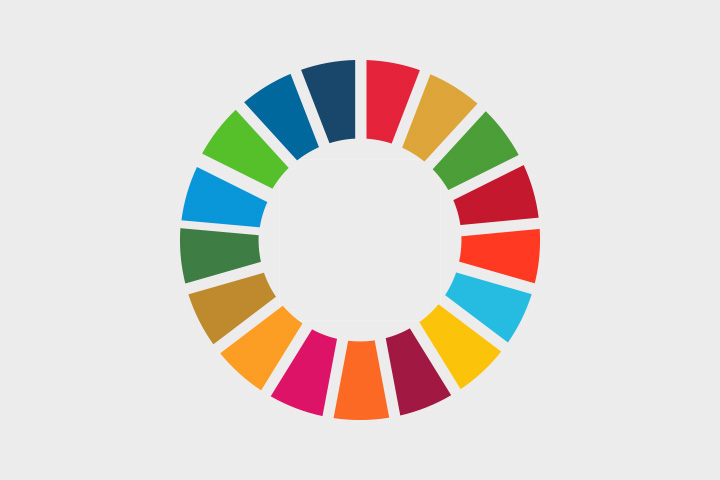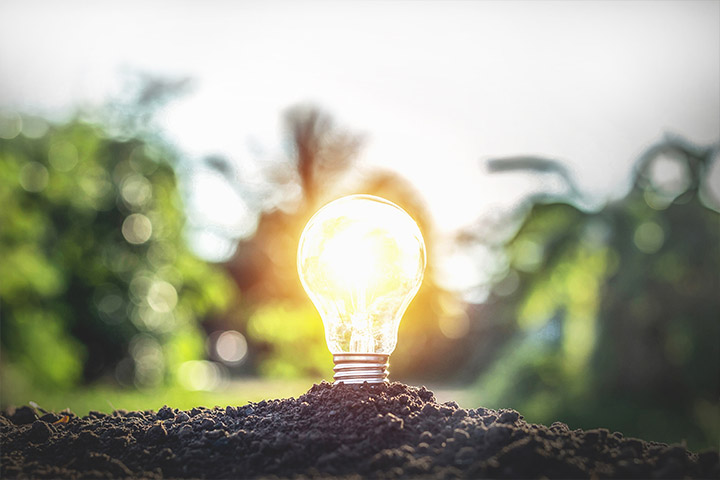FNs Bærekraftsmål
Belysning kan brukes som et viktig verktøy for å oppnå hele 11 av FNs 17 bærekraftsmål for 2030. Her har vi har definert 11 grunner til hvorfor god belysning bør prioriteres av beslutningstakere på nasjonalt og internasjonalt plan. Disse grunnene henger tett sammen med FNs mål og reflekterer vår felles visjon om et mer bærekraftig samfunn.
Sektor belysning
Lyskulturs 11 grunner til å satse på bedre belysning er økt sikkerhet; økt trygghet; bedre opplevelser, trivsel og velvære; enklere å orientere seg; bedre helse; bedre klima; mindre lysforurensning; lavere energiforbruk; bedre læringsmiljø; og bedre prestasjonsevne. Her er bærekraftsmålene som belysning kan bidra til å nå. I Norlux har vi valgt å fokusere på følgende mål:
- 3. God helse og livskvalitet
- 12. Ansvarlig forbruk og produksjon
- 17. Samarbeid for å nå målene
Mål 3. God helse og livskvalitet
Sikre god helse og fremme livskvalitet for alle, uansett alder.
Godt planlagt belysning kan forhindre alvorlige helseplager som f.eks. kronisk stress, migrene og depresjon. Godt belyste uteområder brukes også mer til trening og sosiale aktiviteter, noe som er med på å forbedre sinnstilstanden og virker stabiliserende på blodtrykk, lymfe- og nervesystem. Investering i belysning på arbeidsplasser og skoler gir erfaringsmessig økt lærings- og prestasjonsevne, samt ikke minst bedre trivsel, helse og livskvalitet.
Mål 4. God utdanning
Sikre inkluderende, rettferdig og god utdanning og fremme muligheter for livslang læring for alle.
Belysning er med på å forme det fysiske læringsmiljøet slik at personer med ulik alder og synsforutsetninger kan orientere seg, sosialisere og delta i ulike læringsaktiviteter. Konsentrasjon, humør, energinivå og hukommelse påvirkes i stor grad av belysning. Riktig belysning kan optimalisere læringsutbytte, prestasjoner og trivsel for alle individer. For at en belysningsløsning skal tilrettelegge for ulike aktiviteter og utnytte dagslyset på best mulig måte må styring av lys implementeres.
Mål 7. Ren energi til alle
Sikre tilgang til pålitelig, bærekraftig og moderne energi til en overkommelig pris for alle.
LED er den mest varige, og energi- / kostnadseffektive lyskilden på markedet i dag. Prosjekter som fokuserer på internasjonal distribusjon av strømbesparende LED-pærer i utviklingsland, har gitt flere mennesker i rurale områder muligheter til å studere, arbeide og utføre andre oppgaver på kveldstid. Dette har styrket livskvaliteten til enkeltmennesker og gitt økonomiske gevinst for samfunnet de lever i. En raskere overgang til LED basert belysning vil også frigjøre energi til fremtidens økende behov for elektrisk kraft.
Mål 9. Innovasjon og infrastruktur
Bygge solid infrastruktur og fremme inkluderende og bærekraftig industrialisering og innovasjon.
Belysningsbransjens teknologiske utvikling resulterer i stadig nye energi- og kostnadseffektive lyskilder, belysningsarmaturer og styringssystemer. For å fortsette denne positive utviklingen må beslutningstakere investere i utvikling og -produksjon, oppgraderinger av anlegg og styringssystemer og faglig kompetanse innen belysning i prosjekter.
Mål 10. Mindre ulikhet
Redusere ulikhet i og mellom land.
Oppgradering av belysning kan være en av de enkleste og rimeligste måtene å gi et områdeløft på. Dette kan bidra til demokratisering og integrering av uteområder som for eksempel boligområder, parker, torg, lekeplasser og idrettsanlegg. God belysning gjør det offentlige rom mer tilgjengelig og legger forholdene bedre til rette for et sosialt liv og aktivisering for flere mennesker. Tilgjengelighet av kostnadseffektiv elektrisk belysning i utviklingsland kan også redusere sosioøkonomiske ulikheter mellom land.
Mål 11. Bærekraftige byer og samfunn
Gjøre byer og lokalsamfunn inkluderende, trygge, robuste og bærekraftige.
Energieffektiv belysning er en enkel måte å minimere energiforbruk og klimagassutslipp på. Rask innføring av energieffektive belysningsløsninger vil frigjøre energi. Dette er viktig for å imøtekomme vårt økte energibehov ettersom byer vokser og samfunnet blir mer elektrifisert. Riktig bruk av belysning vil også bidra til at vi føler oss trygge i og stolte av nærområdene våre, noe som styrker vår tilhørighet til området og dets identitet.
Mål 12. Ansvarlig forbruk og produksjon
Sikre bærekraftig forbruks- og produksjonsmønstre.
Nye bærekraftstiltak innen blant annet økodesign og energimerking for belysningsprodukter har blitt vedtatt av EU-landene i år. Regelverk for kvalitetssikring og utfasing av produkter på markedet har også blitt strammet inn. Bransjen bør investere i utvikling av innovative og energieffektive lyskilder, belysningsarmaturer og lysstyring med lang levetid. Ikke minst er videreutvikling av effektive ordninger for gjenvinning og gjenbruk viktig for støtte opp under morgendagens krav til mer omfattende sirkulærøkonomi.
Mål 13. Stoppe klimaendringene
Handle umiddelbart for å bekjempe klimaendringene og konsekvensene av dem (Basert på en erkjennelse av at FNs rammekonvensjon om klimaendring er det viktigste internasjonale og mellomstatlige forumet for forhandlinger om globale tiltak mot klimaendringer).
Med ny og energieffektiv teknologi og lysstyringssystemer kan vi redusere energiforbruket og klimagassutslippene fra belysning. Dagens energibruk for belysning i Norge er på 7-10 TWh, og ved hjelp av LED-belysning og styringssystemer vi redusere energibruken for belysning med opp til 90% innendørs og utendørs. I tillegg til implementering av klimavennlige belysningsløsninger i nybygg, bør alle rehabiliteringsprosjekter av bygninger inkludere oppgradering av belysning.
Mål 14. Livet under vann
Bevare og bruke havet og de marine ressursene på en måte som fremmer bærekraftig utvikling.
Lys regulerer viktige livsfunksjoner som reproduksjon, næringsinntak, migrering og vekst i marine pattedyr, amfibier, fisk og mikroorganismer. I tillegg styrer lys fotosyntese i alger og koraller. Lysforurensning, særlig langs kystområder og store vanndrag, kan skade det biologiske mangfoldet og næringskjeder i svært viktige økosystemer. Ved å investere i lysfaglig kompetanse kan belysning som reduserer disse effektene implementeres.
Mål 15. Livet på land
Beskytte, gjenopprette og fremme bærekraftig bruk av økosystemer, sikre bærekraftig skogforvaltning, bekjempe ørkenspredning, stanse og reversere landforringelse samt stanse tap av artsmangfold.
Gjennom sin skadelig påvirkning på dyr, fugler, insekter og planter kan lysforurensning true det biologiske mangfoldet på land. Noen av funksjonene lysforurensning kan forstyrre er sykluser og mønstre i kommunikasjon, næringssøk, migrering og reproduksjon hos dyr, pollinering hos insekter og plantevekst. Vi trenger lys; god belysning øker både sikkerhet, trygghet, orienteringsevne og helse, trivsel og velvære. Ved å bruke fagpersoner kan derimot vi integrere belysning som både er energieffektiv og som reduserer lysforurensning.videreutvikling av effektive ordninger for gjenvinning og gjenbruk viktig for støtte opp under morgendagens krav til mer omfattende sirkulærøkonomi.
Mål 17. Samarbeid for å nå målene
Styrke virkemidlene som trengs for å gjennomføre arbeidet, og fornye globale partnerskap for bærekraftig utvikling.
Det finnes allerede flere internasjonale organisasjoner og tette samarbeid innen den globale belysningsbransjen. Felles utarbeidelser av regelverk, standarder og veiledere styrker dette samarbeidet og fokuset på våre felles mål. Ved at beslutningstakere prioriterer og tar i bruk faglig kompetanse både nasjonalt og internasjonalt kan vi sammen utnytte det globale potensialet innen belysning til fordel for alle.





